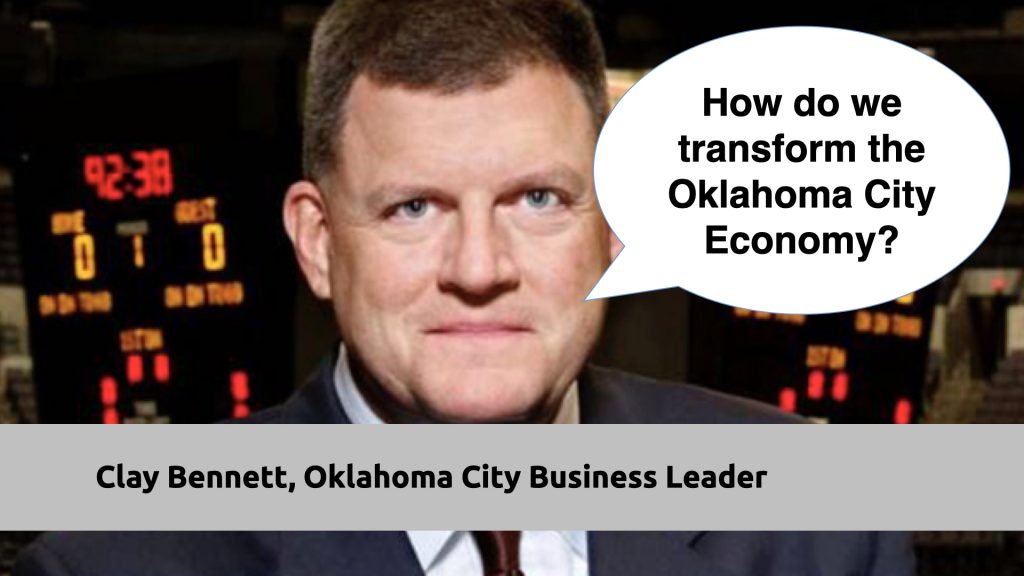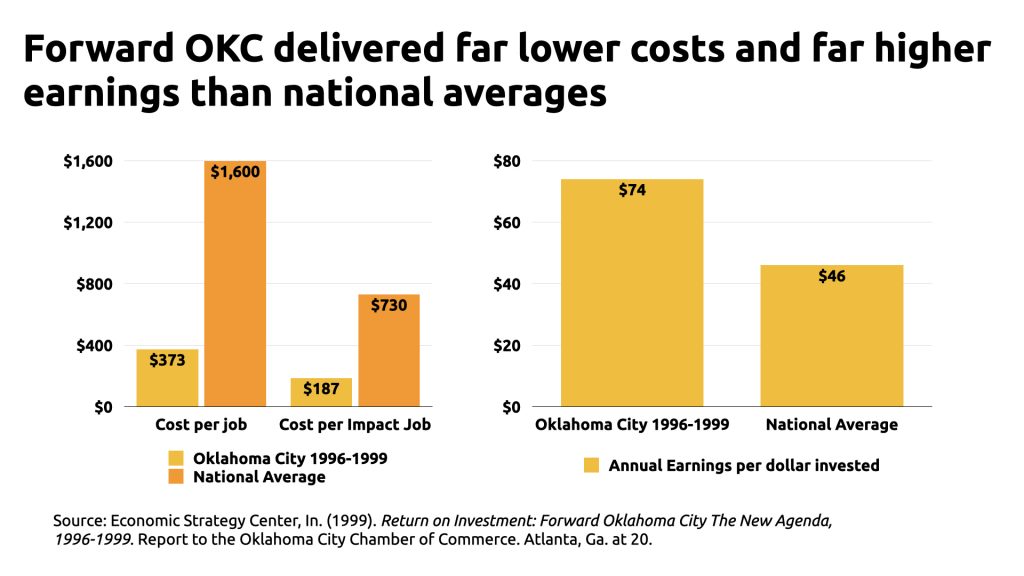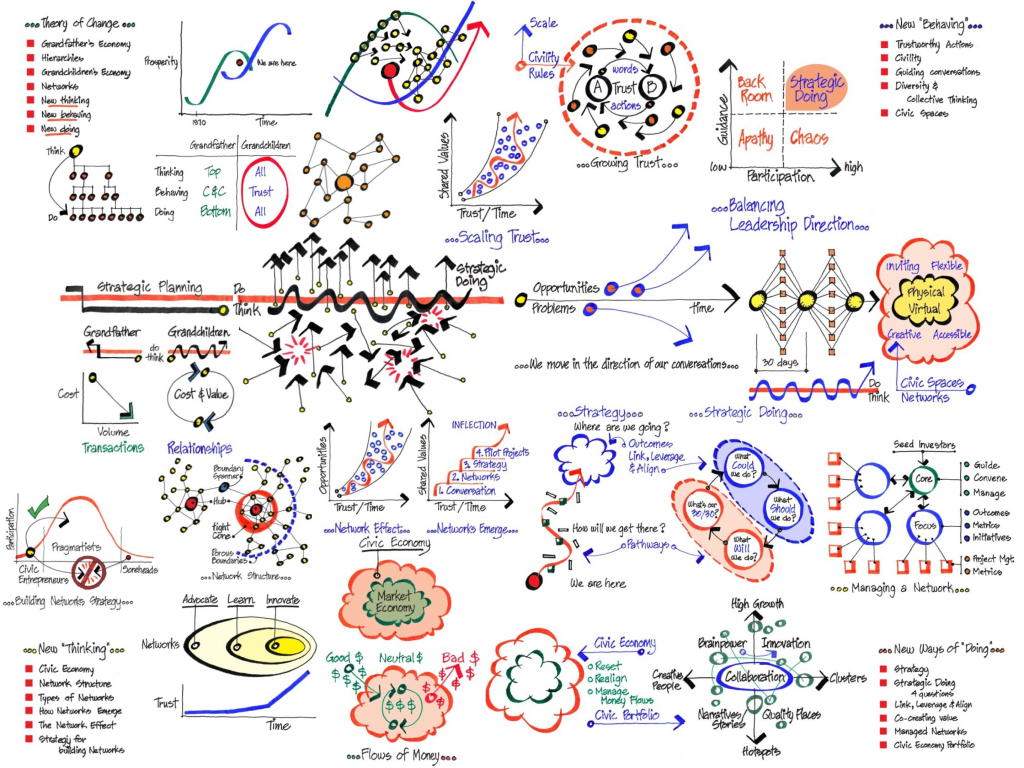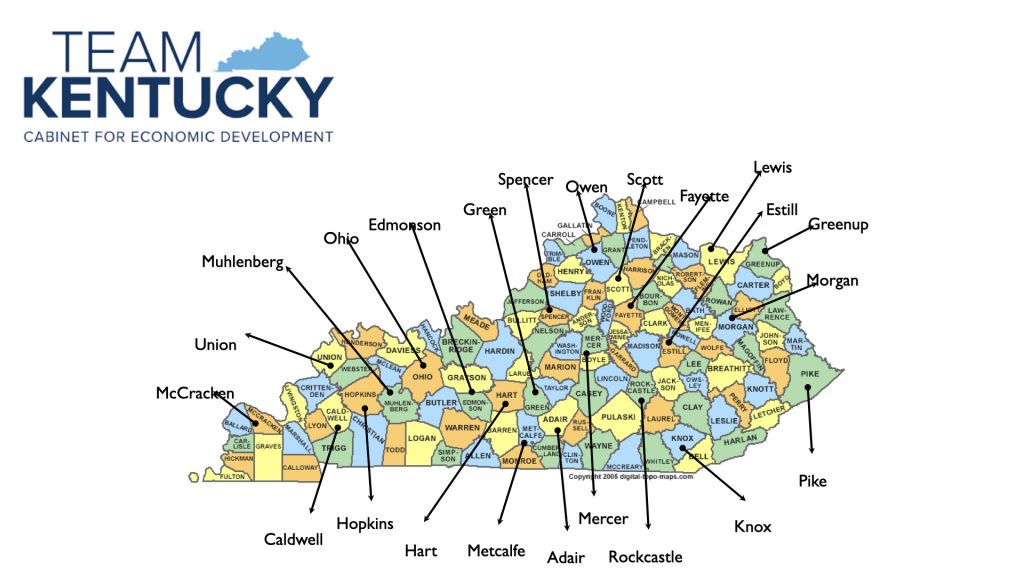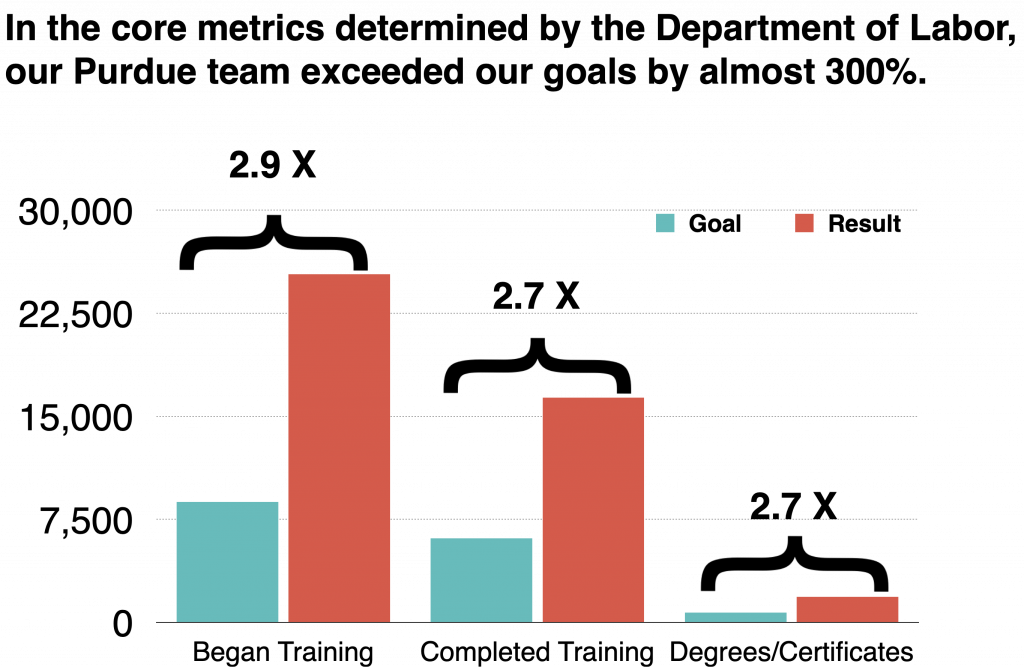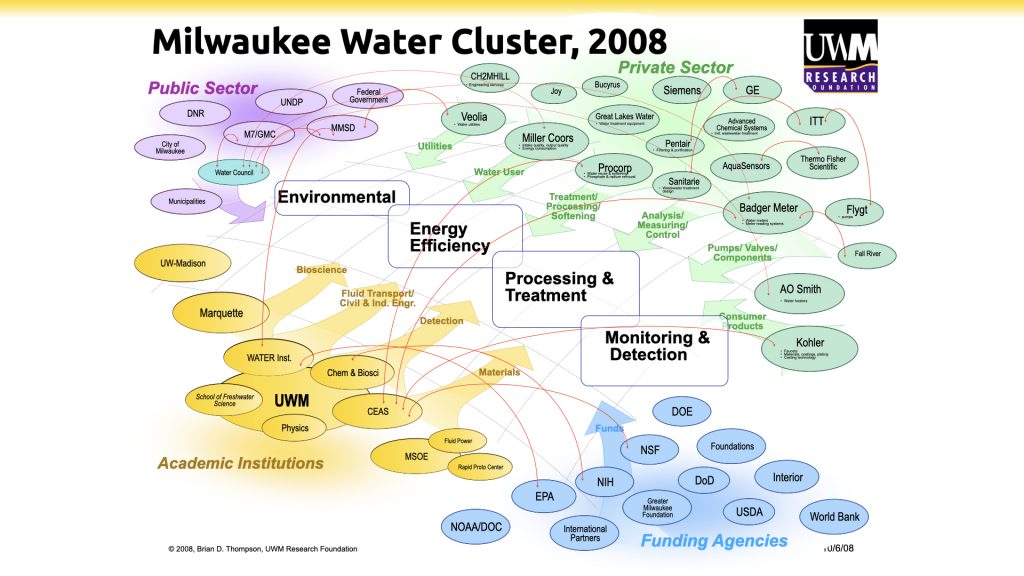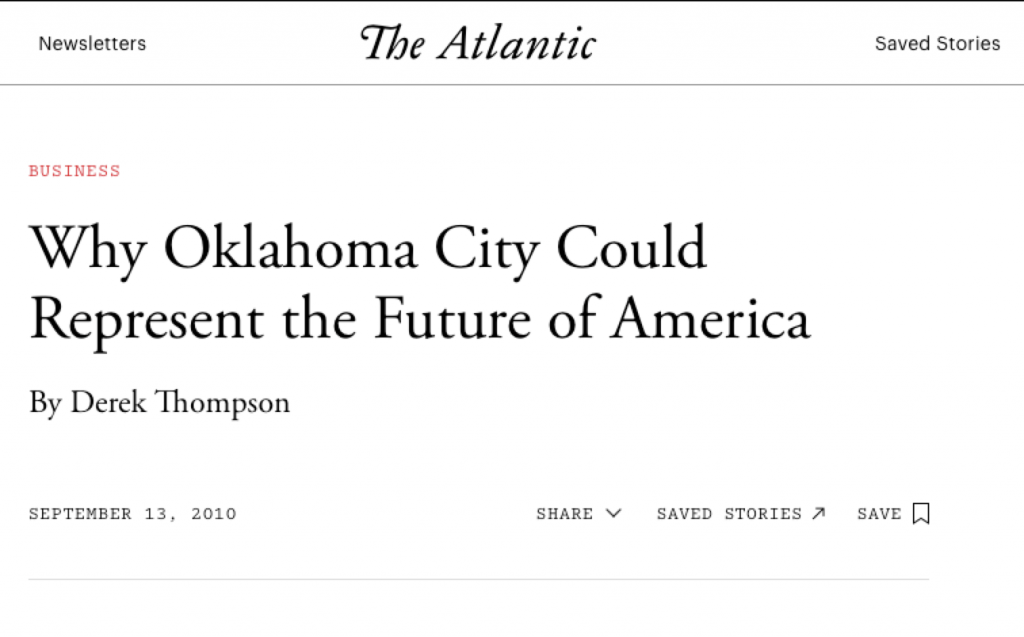1993-1999: Forward Oklahoma City and the Birth of Strategic Doing
Ed Morrison began a large scale experiment to transform a regional economy through collaboration and networks. Clay Bennett, a venture capitalist, led Forward Oklahoma City, a privately-led, publicly supported investment strategy. Led by the Chamber of Commerce, Forward Oklahoma City complemented a publicly-led, privately-supported strategy, MAPS (Metropolitan Area Projects), led by the mayor Ron Norrick, a serial entrepreneur.
1997: Data Confirmed Oklahoma City Breakthrough
An outside firm assessed Morrison’s experiment and verifies that it produces dramatically higher productivity levels than traditional economic development strategies. Net present value of a ten year return on a $10 million investment estimated at $1.35 billion.
1995-2003: Visual Language for Strategic Doing Developed
Strategy in open networks involves forming and guiding complex hidden networks. Understanding these networks involves developing a visual language, much like molecular biology. Morrison worked with Kim Mitchell, and architect and planner, to develop the initial set of drawings that are used to communicate and teach Strategic Doing.
1996-1999: Globalization Challenges Met Across Kentucky
Morrison designed a version of his model for the State of Kentucky, focusing on 22 rural counties. Each county faced devastating impacts from globalization. Independent assessment verified 18 of 22 counties make “measurable progress” using this approach. Through the 1990s, Morrison works with Kim Mitchell to develop a visual language for the model.
2001: Charleston Digital Corridor Launched
Morrison taught his model of network-based development to Ernest Andrade, the founder of the Charleston Digital Corridor. The Corridor went on to become a leading hub for digital technology companies.
2003: Lowe Foundation Supported First Strategic Doing Training
The Edward Lowe Foundation, which focuses on entrepreneurship, invited Morrison to experiment with teaching Strategic Doing for the first time.
2005: Purdue Testbeds Launched
Morrison brings the Strategic Doing model to Purdue and Purdue agreed to support the continued development of the model. Vice Provost Vic Lechtenberg agreed to “open-source” the intellectual property of Strategic Doing, if the model proved successful. Morrison and Scott Hutcheson, and Peggy Hosea form the initial core team for the development of Strategic Doing. They launched the initial Purdue testbed, a $15 million initiative to transform the regional workforce system. Testbeds continued with Purdue with NASA, Lockheed, New Jersey Institute of Technology, Fraunhofer IAO, and faculty at Purdue.
2005-2008: Purdue Demonstrated Power of Strategic Doing with Workforce Development Collaborations
Purdue’s initial testbed for Strategic Doing was designed by Scott Hutcheson and Ed Morrison. The experiment produced dramatic results. With $15 million — 8% of the money awarded nationally — Purdue produced 40% of the national metrics on improved workforce performance.
2008: Global Water Hub Launched
Milwaukee civic leaders asked Purdue to help launch a global water hub in Milwaukee. Within the first three years, The Water Council established itself as a global water hub. Another privately-led, publicly supported investment initiative, the Water Council was led by Paul Jones, CEO of A.O. Smith, and Rich Meeusen, CEO of Badger Meter.
2010: Oklahoma City Recognized as a National Model
The national recognition of Oklahoma City’s economic transformation grew, as a culture of collaboration took hold in Oklahoma City. Data continued to accumulate that Strategic Doing delivered exceptional levels of improved productivity.
